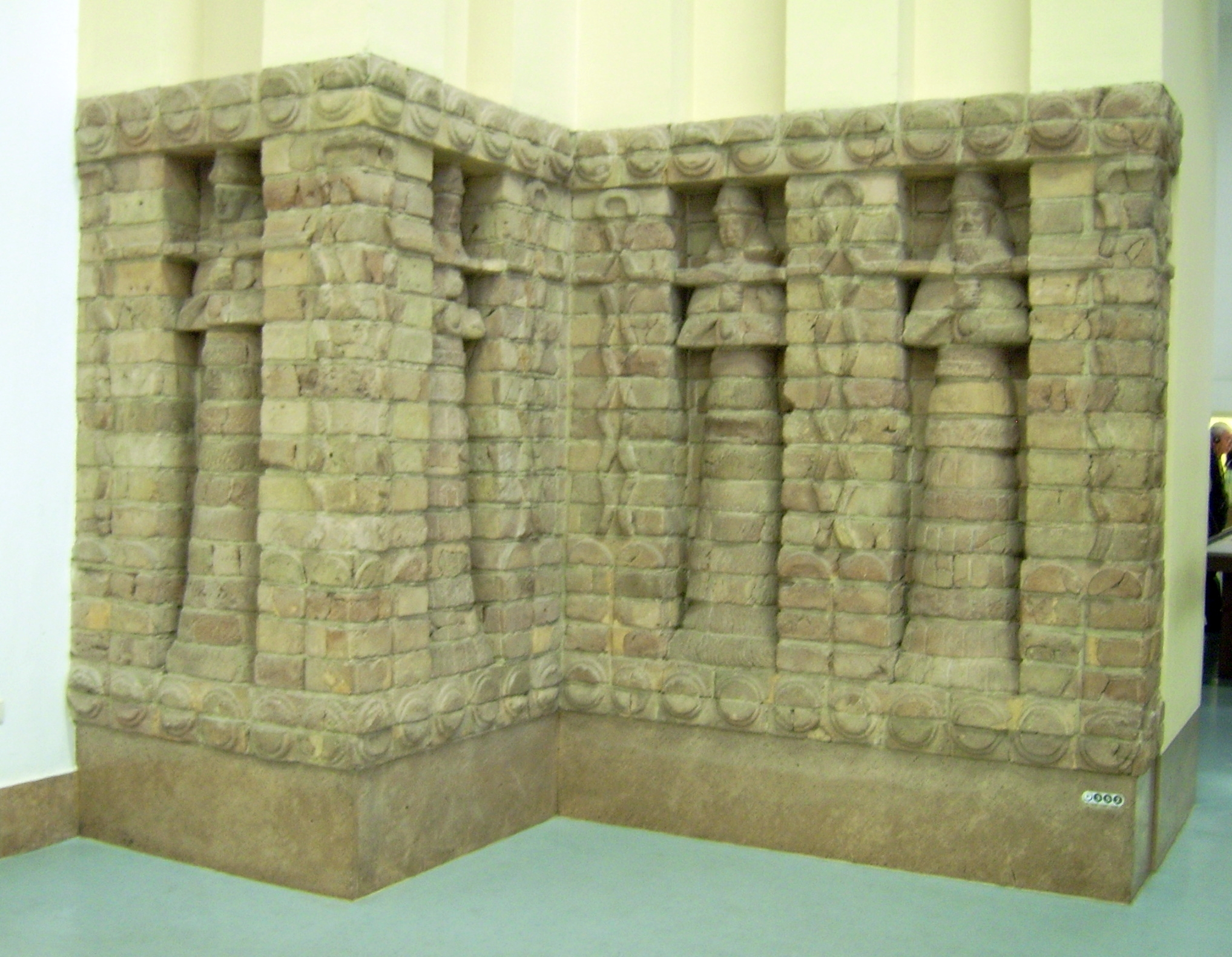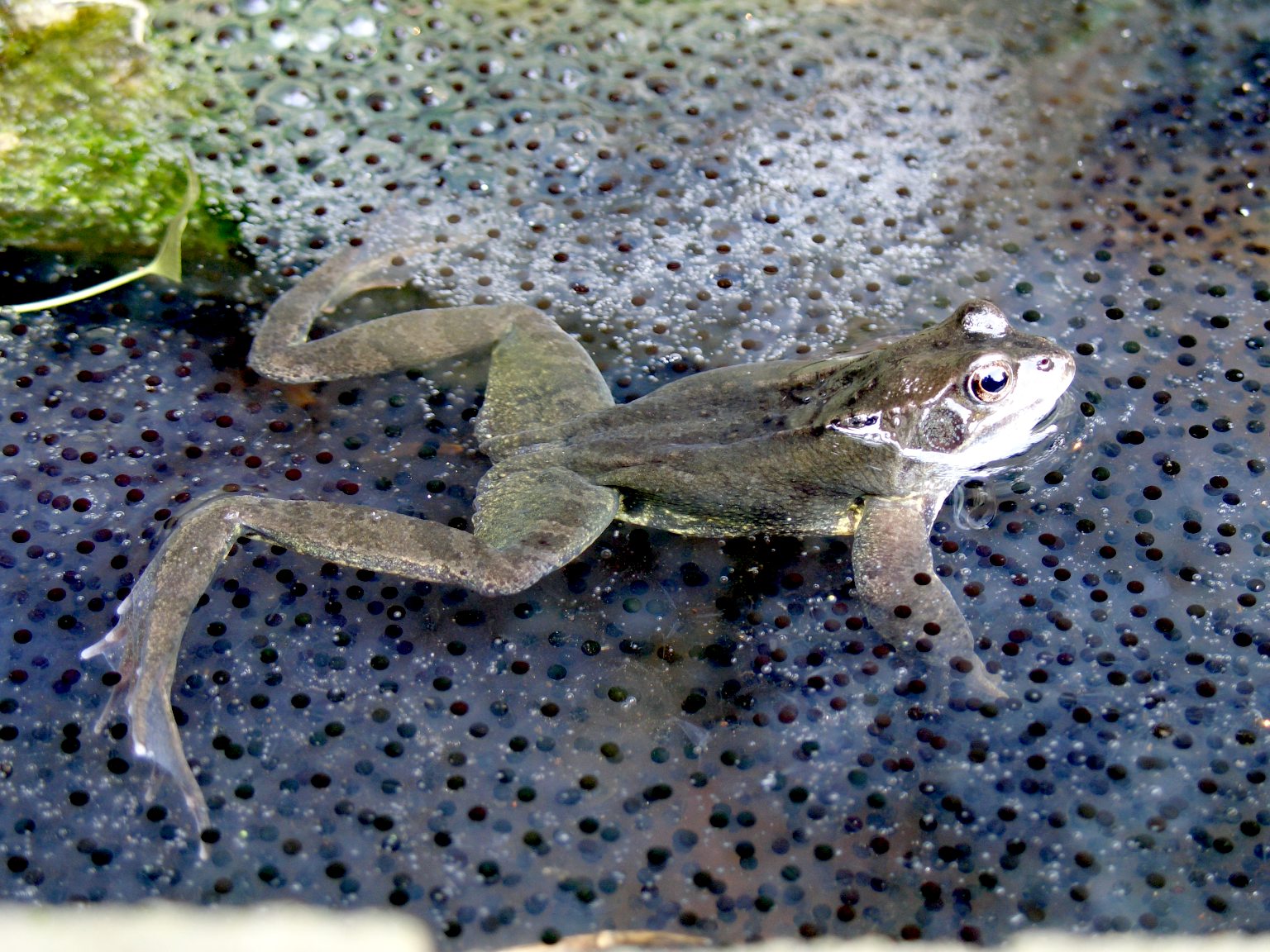|
Lahamu
Lahamu ( , d la-ḫa-mu) was a minor figure in some variants of Mesopotamian cosmology, the feminine counterpart of Lahmu. In some god lists she was one of the ancestors of Anu. In Enuma Elish she is the first-born daughter of Tiamat and Abzu. With her brother Lahmu she is the mother of Anshar and Kishar In the Babylonian epic Enuma Elish, Kishar () is the daughter of Abzu and Lahmu, the first children of Tiamat In Mesopotamian religion, Tiamat ( or , ) is the primordial sea, mating with Abzû (Apsu), the groundwater, to produce the ..., who were in turn parents of the first gods. 19th and early 20th century researchers incorrectly viewed both Lahmu and Lahamu as the representations of the zodiac, parent-stars, or constellations. References Sources * Michael Jordan, ''Encyclopedia of Gods'', Kyle Cathie Limited, 2002 Mesopotamian goddesses Offspring of Tiamat Characters in the Enūma Eliš {{MEast-myth-stub ... [...More Info...] [...Related Items...] OR: [Wikipedia] [Google] [Baidu] |
Lahmu
Laḫmu ( or , d laḫ-mu, ) is a class of apotropaic creatures from Mesopotamian mythology. While the name has its origin in a Semitic language, Lahmu was present in Sumerian sources in pre- Sargonic times already. Iconography and character Laḫmu is depicted as a bearded man wearing a red garment (''tillû'') Some texts mention a spade as the attribute of Lahmu. The artistic representations are sometimes called "naked heroes" in literature. Lahmu were associated with water. They were generally believed to be servants of Enki/Ea (and later on of his son Marduk as well), and were described as the doorkeepers of his temple in Eridu and possibly as the "guardians of the sea" known from some versions of the '' Atra-Hasis''. Some texts list as many as 50 Lahmu in such roles. It's possible they were initially river spirits believed to take care of domestic and wild animals. Apotropaic creatures such as Lahmu weren't regarded as demonic; they protected the household from demon ... [...More Info...] [...Related Items...] OR: [Wikipedia] [Google] [Baidu] |
Tiamat
In Mesopotamian religion, Tiamat ( or , ) is the primordial sea, mating with Abzû (Apsu), the groundwater, to produce the gods in the Babylonian epic '' Enûma Elish'', which translates as "when on high". She is referred to as a woman, and has—at various points in the epic—a number of anthropomorphic features (such as breasts) and theriomorphic features (such as a tail). In the ''Enûma Elish'', the Babylonian epic of creation, Tiamat bears the first generation of deities after mingling her waters with those of Apsu, her consort. The gods continue to reproduce, forming a noisy new mass of divine children. Apsu, driven to violence by the noise they make, seeks to destroy them and is killed. Enraged, Tiamat also wars upon those of her own and Apsu's children who killed her consort, bringing forth a series of monsters as weapons. She also takes a new consort, Qingu, and bestows on him the Tablet of Destinies, which represents legitimate divine rulership. She is ulti ... [...More Info...] [...Related Items...] OR: [Wikipedia] [Google] [Baidu] |
Anshar
Anshar ( , , ) was a Mesopotamian god regarded as a primordial king of the gods. He was not actively worshiped. He was regarded as the father of Anu. In the first millennium BCE his name came to be used as a logographic representation of the head god in the Assyrian state pantheon, Ashur. He is attested in a number of god lists, such as '' An = Anum'', and in literary compositions, including the ''Enūma Eliš''. Name and character Anshar's name was written in cuneiform as AN.ŠÁR. It can be translated from Sumerian as "the whole heaven". Benjamin R. Foster suggests that together with Kishar he was understood as the personification of the circle of the horizon, which represented the totality of heaven and earth. It was believed that he was involved in creation of the world and the other deities. He was regarded as a primordial deity. As such, he was an abstract figure who was not actively worshiped. The theonym Anshargal attested in god lists is presumed to be a variant ... [...More Info...] [...Related Items...] OR: [Wikipedia] [Google] [Baidu] |
Anu (god)
Anu ( , from 𒀭 ''an'' "Sky", "Heaven") or Anum, originally An ( ), was the divine personification of the sky, king of the gods, and ancestor of many of the deities in ancient Mesopotamian religion. He was regarded as a source of both divine and human kingship, and opens the enumerations of deities in many Mesopotamian texts. At the same time, his role was largely passive, and he was not commonly worshipped. It is sometimes proposed that the Eanna temple located in Uruk originally belonged to him, rather than Inanna. While he is well attested as one of its divine inhabitants, there is no evidence that the main deity of the temple ever changed; Inanna was already associated with it in the earliest sources. After it declined, a new theological system developed in the same city under Seleucid rule, resulting in Anu being redefined as an active deity. As a result he was actively worshipped by inhabitants of the city in the final centuries of the history of ancient Mesopotamia. ... [...More Info...] [...Related Items...] OR: [Wikipedia] [Google] [Baidu] |
Abzu
Abzû or Apsû ( Sumerian: ; Akkadian: ), also called (Cuneiform:, ; Sumerian: ; Akkadian: – recorded in Greek as ), is the name for fresh water from underground aquifers which was given a religious fertilising quality in ancient near eastern cosmology, including Sumerian and Akkadian mythology. It was believed that all lakes, springs, rivers, fountains, rain, and even the Flood, as described in Atrahasis, originated from the Abzû. In Mesopotamian cosmogony, it is referred to as the freshwater primordial ocean below and above the earth; indeed the Earth itself was regarded as a goddess ''Ninhursag'' that was conceived from the mating of male Abzu with female saltwater ocean ''Tiamat''. Thus the divine Mother Earth – on her surface equipped with a bubble of breathable air – was surrounded by Abzû, and her interior harbours the realm of the dead (Irkalla). In Sumerian culture In the city of Eridu, Enki's temple was known as E2-abzû (house of the deep ... [...More Info...] [...Related Items...] OR: [Wikipedia] [Google] [Baidu] |
Kishar
In the Babylonian epic Enuma Elish, Kishar () is the daughter of Abzu and Lahmu, the first children of Tiamat In Mesopotamian religion, Tiamat ( or , ) is the primordial sea, mating with Abzû (Apsu), the groundwater, to produce the gods in the Babylonian epic '' Enûma Elish'', which translates as "when on high". She is referred to as a woman, an ... and Abzu. She is the female principle, sister and wife of Anshar, the male principle, and the mother of Anu. Kishar may represent the earth as a counterpart to Anshar, the sky,Black, Jeremy and Anthony Green, 1992. ''Gods, Demons and Symbols of Ancient Mesopotamia: An Illustrated Dictionary.'' London: British Museum Press. p. 34. and can be seen as an earth mother goddess. Her name also means "Whole Earth". Kishar appears only once in Enuma Elish, in the opening lines of the epic, and then disappears from the remainder of the story. She appears only occasionally in other first millennium BCE texts, where she can ... [...More Info...] [...Related Items...] OR: [Wikipedia] [Google] [Baidu] |
Mesopotamian Goddesses
Deities in ancient Mesopotamia were almost exclusively Anthropomorphism, anthropomorphic. They were thought to possess extraordinary powers and were often envisioned as being of tremendous physical size. The deities typically wore ''melam'', an ambiguous substance which "covered them in terrifying splendor" and which could also be worn by heroes, kings, giants, and even demons. The effect that seeing a deity's ''melam'' has on a human is described as ''ni'', a word for the "Paresthesia, physical creeping of the flesh". Both the Sumerian language, Sumerian and Akkadian languages contain many words to express the sensation of ''ni'', including the word ''puluhtu'', meaning "fear". Deities were almost always depicted wearing horned caps, consisting of up to seven superimposed pairs of ox-horns. They were also sometimes depicted wearing clothes with elaborate decorative gold and silver ornaments sewn into them. The ancient Mesopotamians believed that their deities lived in Heaven, ... [...More Info...] [...Related Items...] OR: [Wikipedia] [Google] [Baidu] |
Dingir
''Dingir'' ⟨⟩, usually transliterated DIĜIR, () is a Sumerian word for 'god' or 'goddess'. Its cuneiform sign is most commonly employed as the determinative for religious names and related concepts, in which case it is not pronounced and is conventionally transliterated as a superscript ⟨d⟩, e.g. The Sumerian cuneiform sign by itself was originally an ideogram for the Sumerian word ''an'' ('sky' or 'heaven');Hayes, 2000 its use was then extended to a logogram for the word ('god' or 'goddess')Edzard, 2003 and the supreme deity of the Sumerian pantheon Anu, and a phonogram for the syllable . Akkadian cuneiform took over all these uses and added to them a logographic reading for the native '' ilum'' and from that a syllabic reading of . In Hittite orthography, the syllabic value of the sign was again only ''an''. The concept of divinity in Sumerian is closely associated with the heavens, as is evident from the fact that the cuneiform sign doubles as the ideogram f ... [...More Info...] [...Related Items...] OR: [Wikipedia] [Google] [Baidu] |
Cosmology
Cosmology () is a branch of physics and metaphysics dealing with the nature of the universe, the cosmos. The term ''cosmology'' was first used in English in 1656 in Thomas Blount's ''Glossographia'', with the meaning of "a speaking of the world". In 1731, German philosopher Christian Wolff used the term cosmology in Latin (''cosmologia'') to denote a branch of metaphysics that deals with the general nature of the physical world. Religious or mythological cosmology is a body of beliefs based on mythological, religious, and esoteric literature and traditions of creation myths and eschatology. In the science of astronomy, cosmology is concerned with the study of the chronology of the universe. Physical cosmology is the study of the observable universe's origin, its large-scale structures and dynamics, and the ultimate fate of the universe, including the laws of science that govern these areas. It is investigated by scientists, including astronomers and physicists, a ... [...More Info...] [...Related Items...] OR: [Wikipedia] [Google] [Baidu] |
Offspring Of Tiamat
In biology, offspring are the young creation of living organisms, produced either by sexual or asexual reproduction. Collective offspring may be known as a brood or progeny. This can refer to a set of simultaneous offspring, such as the chicks hatched from one clutch of eggs, or to all offspring produced over time, as with the honeybee. Offspring can occur after mating, artificial insemination, or as a result of cloning. Human offspring ( descendants) are referred to as children; male children are sons and female children are daughters (see Kinship). Overview Offspring contains many parts and properties that are precise and accurate in what they consist of, and what they define. As the offspring of a new species, also known as a child or f1 generation, consist of genes of the father and the mother, which is also known as the parent generation. Each of these offspring contains numerous genes which have coding for specific tasks and properties. Males and females both contrib ... [...More Info...] [...Related Items...] OR: [Wikipedia] [Google] [Baidu] |



